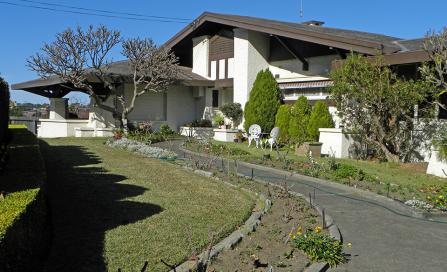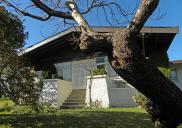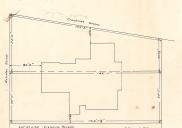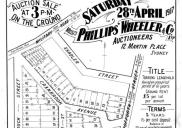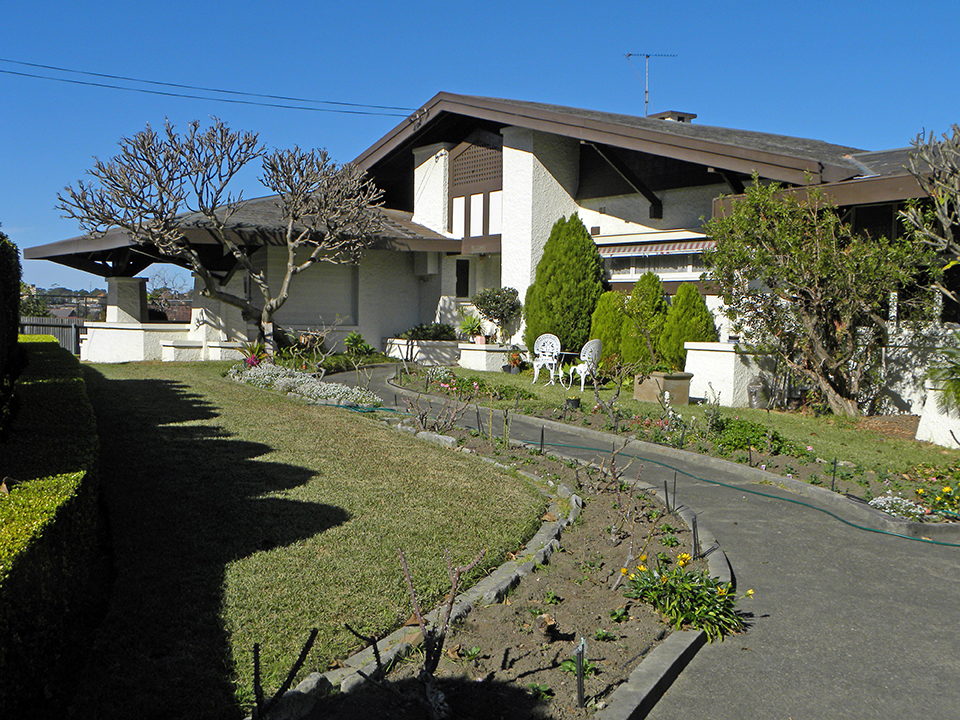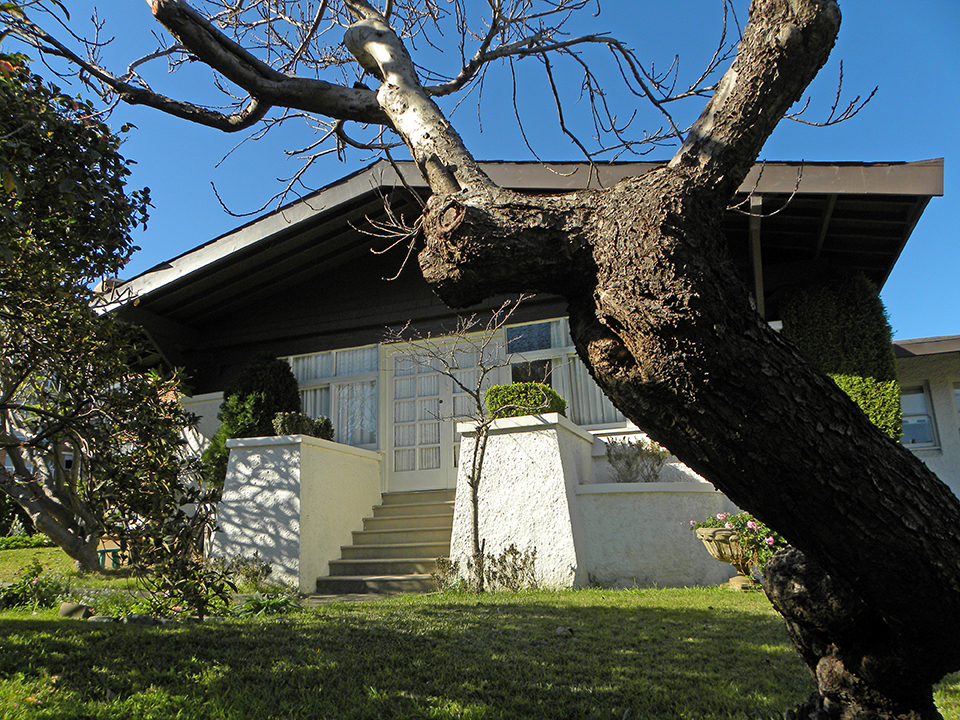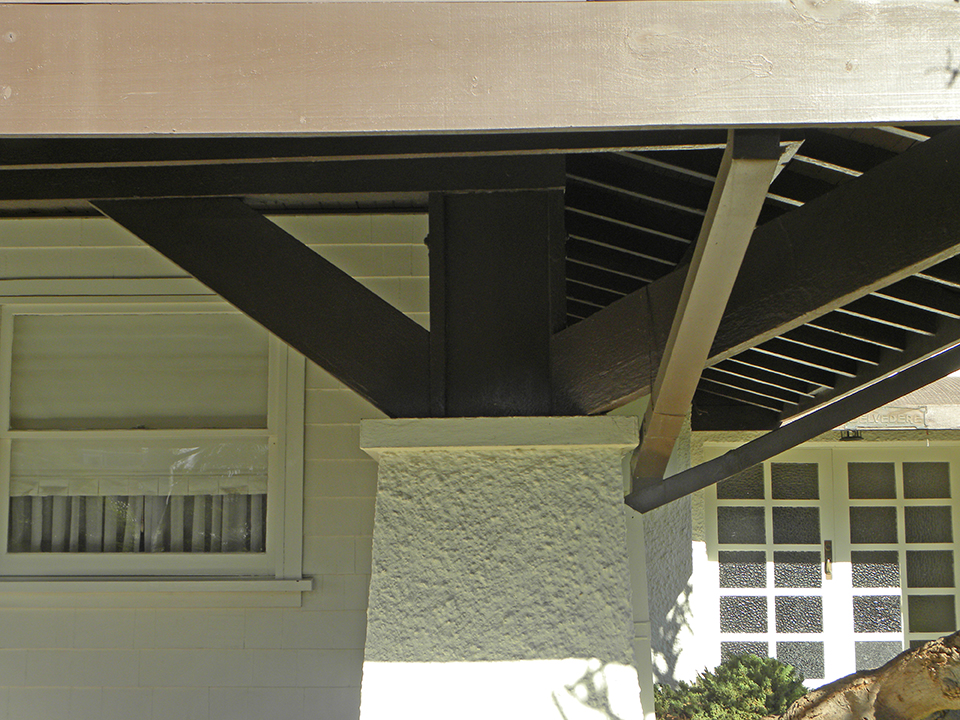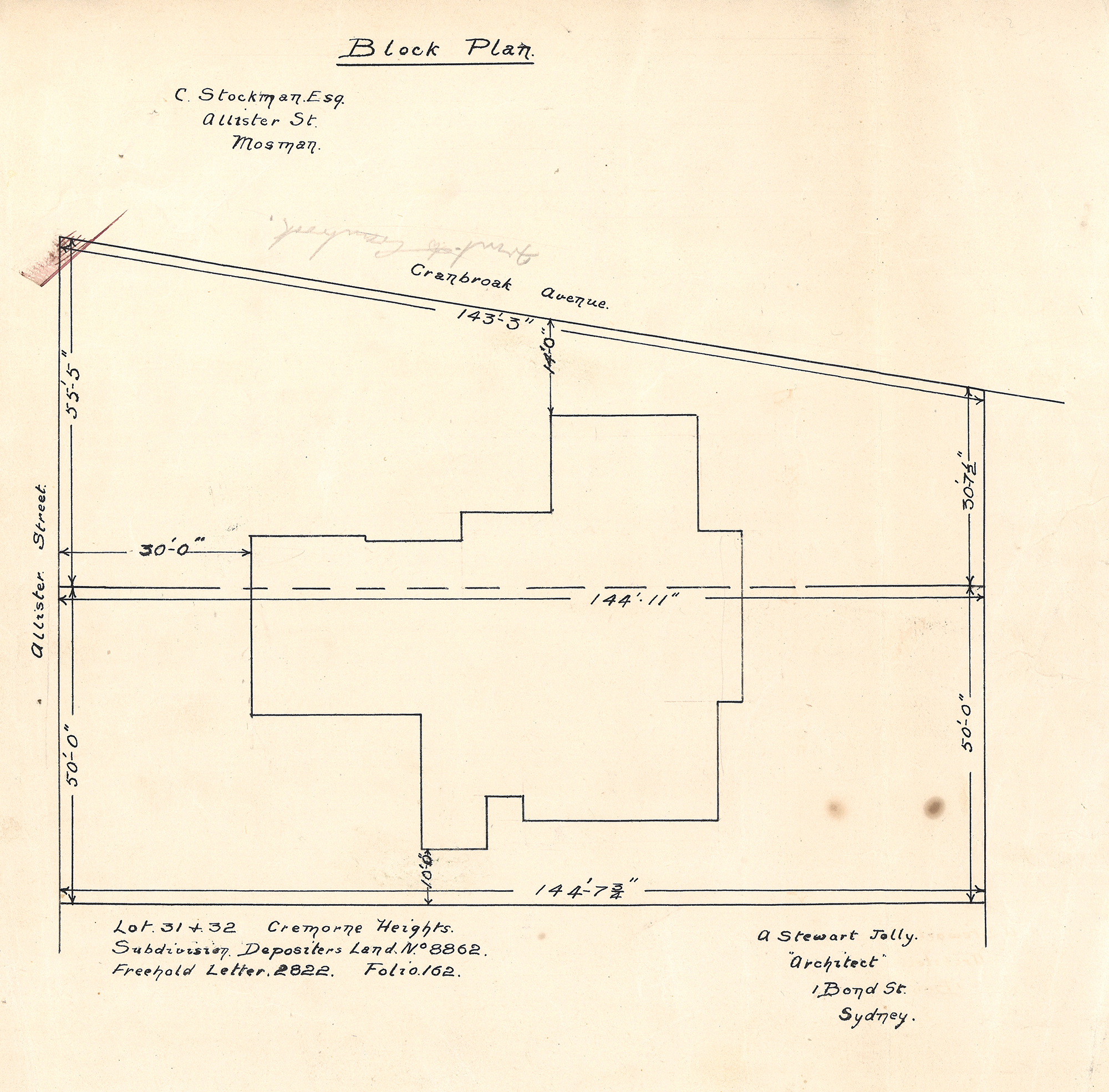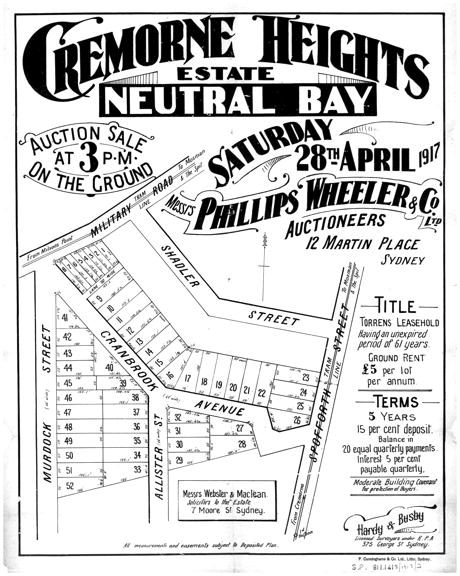|
‘Belvedere’7 Cranbrook Avenue, CremorneIn 1919, a year after SG Thorp submitted his Building Application for ‘The Cobbles’, the architect Alexander Stewart Jolly drew and presented a similarly cursory sketch to North Sydney Council for a ‘brick on stone’ house not far to the north.It may not have been obvious to the Council surveyor who approved the application but ‘Belvedere’, as the house was later named, would follow Thorp’s bungalow as one of the most significant examples of the influence of American domestic architecture in Sydney. Jolly was the son of a furniture maker from northern New South Wales. Working with his father developed a sense of craft and timber in the young Stewart. Architectural training in Sydney from 1908 exposed him to the styles then in vogue which, for the most part were English Revival and Federation era designs. In practice on his own from 1918, Jolly did not travel abroad to find inspiration unlike contemporaries such as William Hardy Wilson. He must, then, have assimilated ideas from overseas through journals, local observation and discussion. The architect absorbed much and implemented many ideas with his own unique interpretation without regard necessarily for what was fashionable. Jolly was, in the words of the architectural historian JM Freeland, ‘a dreamer with a restless mind’. ‘Belvedere’ was built for Christian Stockman, one of many wealthy pastoralists and graziers who built ‘city’ homes in the Mosman, Cremorne, Neutral Bay and Kirribilli areas. Cranbrook Avenue was in the newly subdivided Cremorne Heights Estate. ‘Belvedere’ took up two blocks - Lots 31 and 32. Its dramatic horizontal roof planes owe as much to Frank Lloyd Wright’s ‘Prairie’ houses as the work of Greene and Greene, the major innovators in the Californian Bungalow style. The rough cast masonry recalled earlier Arts and Crafts houses but ‘Belvedere’s’ walls were coloured white, providing a simple contrast with the dramatic roof planes and dark timber. In 1925 it was described as a type of Californian Bungalow, ‘a style very suitable for Sydney and Melbourne... artistic and pleasing’. In later years it was appreciated as a forerunner of Modernism. Jolly retired from city practice in the mid-1920s but completed several idiosyncratic houses in stone and timber at Avalon on Sydney’s northern beaches in the early 1930s, as part of a venture into land speculation. He did not practice architecture after World War Two and died in Wollstonecraft in 1957.
|
|

